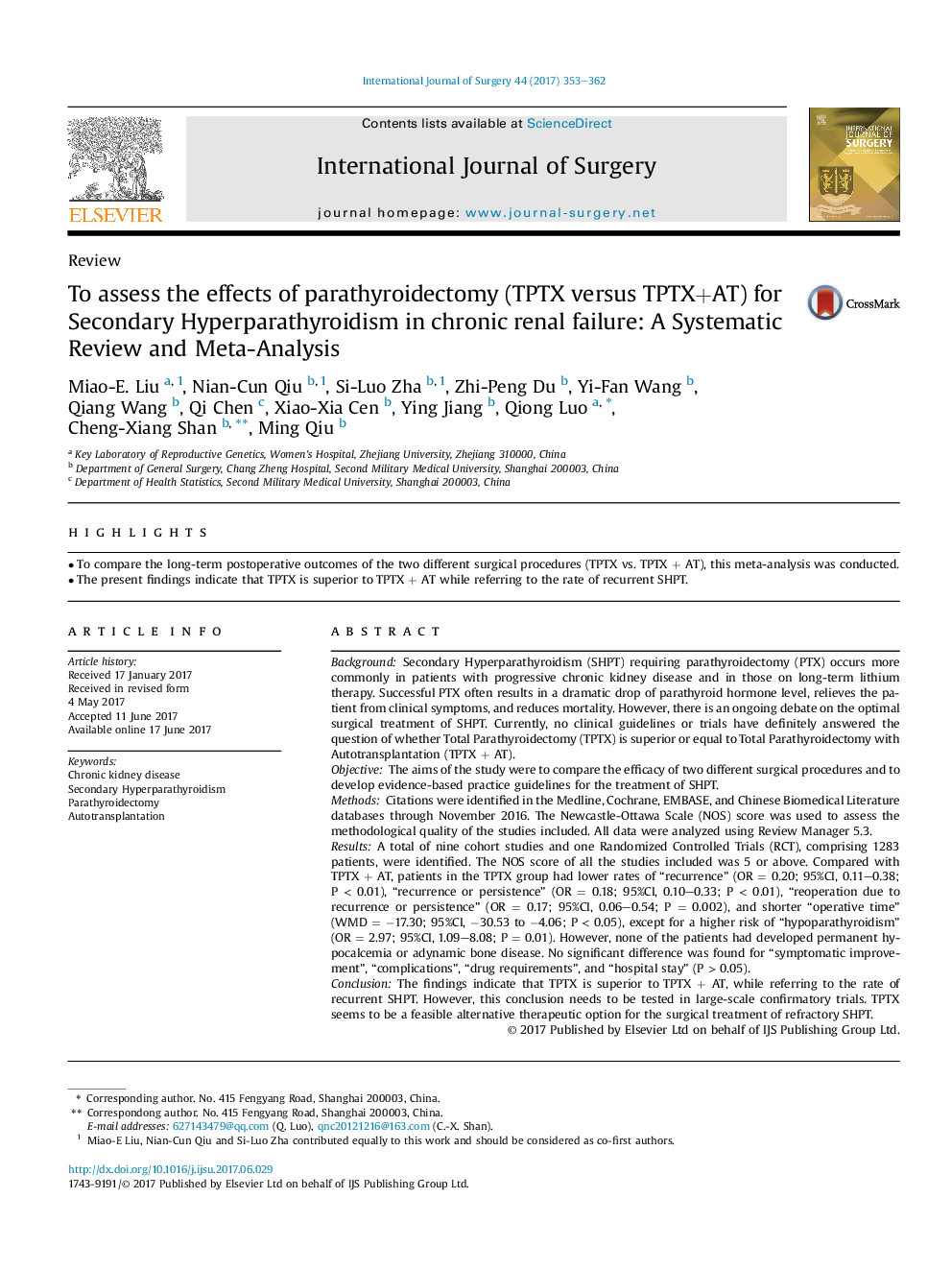| Article ID | Journal | Published Year | Pages | File Type |
|---|---|---|---|---|
| 5731652 | International Journal of Surgery | 2017 | 10 Pages |
â¢To compare the long-term postoperative outcomes of the two different surgical procedures (TPTX vs. TPTX + AT), this meta-analysis was conducted.â¢The present findings indicate that TPTX is superior to TPTX + AT while referring to the rate of recurrent SHPT.
BackgroundSecondary Hyperparathyroidism (SHPT) requiring parathyroidectomy (PTX) occurs more commonly in patients with progressive chronic kidney disease and in those on long-term lithium therapy. Successful PTX often results in a dramatic drop of parathyroid hormone level, relieves the patient from clinical symptoms, and reduces mortality. However, there is an ongoing debate on the optimal surgical treatment of SHPT. Currently, no clinical guidelines or trials have definitely answered the question of whether Total Parathyroidectomy (TPTX) is superior or equal to Total Parathyroidectomy with Autotransplantation (TPTX + AT).ObjectiveThe aims of the study were to compare the efficacy of two different surgical procedures and to develop evidence-based practice guidelines for the treatment of SHPT.MethodsCitations were identified in the Medline, Cochrane, EMBASE, and Chinese Biomedical Literature databases through November 2016. The Newcastle-Ottawa Scale (NOS) score was used to assess the methodological quality of the studies included. All data were analyzed using Review Manager 5.3.ResultsA total of nine cohort studies and one Randomized Controlled Trials (RCT), comprising 1283 patients, were identified. The NOS score of all the studies included was 5 or above. Compared with TPTX + AT, patients in the TPTX group had lower rates of “recurrence” (OR = 0.20; 95%CI, 0.11-0.38; P < 0.01), “recurrence or persistence” (OR = 0.18; 95%CI, 0.10-0.33; P < 0.01), “reoperation due to recurrence or persistence” (OR = 0.17; 95%CI, 0.06-0.54; P = 0.002), and shorter “operative time” (WMD = â17.30; 95%CI, â30.53 to â4.06; P < 0.05), except for a higher risk of “hypoparathyroidism” (OR = 2.97; 95%CI, 1.09-8.08; P = 0.01). However, none of the patients had developed permanent hypocalcemia or adynamic bone disease. No significant difference was found for “symptomatic improvement”, “complications”, “drug requirements”, and “hospital stay” (P > 0.05).ConclusionThe findings indicate that TPTX is superior to TPTX + AT, while referring to the rate of recurrent SHPT. However, this conclusion needs to be tested in large-scale confirmatory trials. TPTX seems to be a feasible alternative therapeutic option for the surgical treatment of refractory SHPT.
